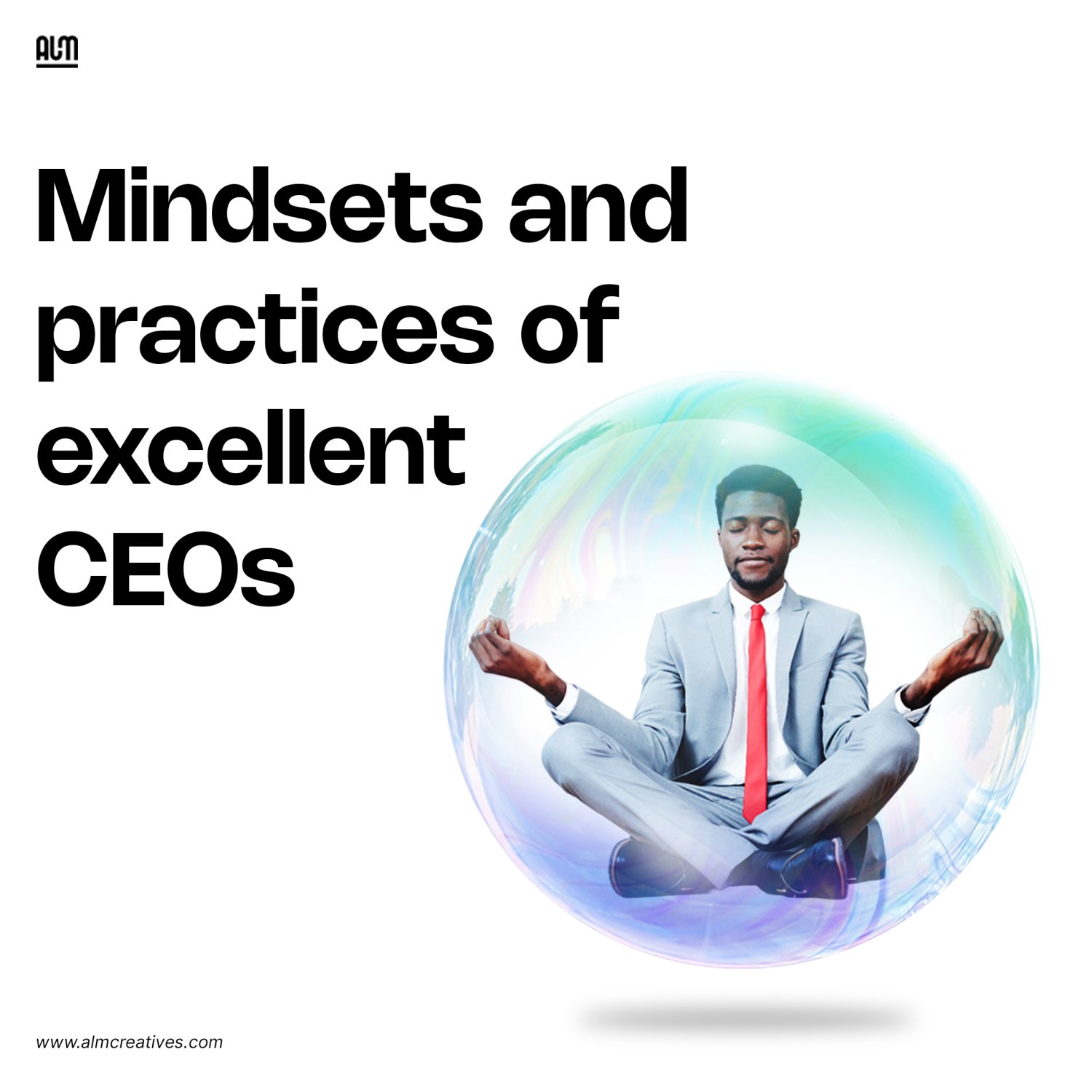Search
Mindsets and practices of excellent CEOs
Business and advices
The effectiveness of a teacher directly impacts the performance of the players and the overall results of the team. Conversely, if the trainer lacks organization, fails to earn the respect of their players, and is unwanted, the entire team will suffer negative consequences.
Within a company, the role of chief executive officer (CEO) holds unparalleled significance. It is the most influential and highly sought-after title in the business world, offering excitement, rewards, and substantial influence. The decisions and actions taken by the CEO, which account for 45 percent of a company's performance, have a profound impact. Despite the allure of the role, serving as a CEO can be all-consuming, isolating, and stressful.
It is worth noting that only three out of five newly appointed CEOs meet performance expectations within their first 18 months on the job. The rigorous standards and wide-ranging expectations of directors, shareholders, customers, and employees create an environment of constant scrutiny. In this environment, a single move can significantly shape or derail an accomplished career.
Only six distinct mindsets set apart the most exceptional leaders from their counterparts. These mindsets empower them to effectively navigate and thrive in challenging environments characterized by factors such as increased competition, disruptive change, digital transformation, pressing social and environmental concerns, or economic crises. While others may struggle to make progress, these exceptional leaders consistently achieve remarkable success. The key differentiator lies in their unique way of thinking, which drives them to take distinct and impactful actions on a daily basis.
The most exceptional CEOs may not excel in every individual mindset, but they excel in their ability to effectively integrate and balance all of these responsibilities simultaneously. It is crucial for a CEO to find harmony in managing various aspects of their role. While they may not strive to be the smartest person in the room, they possess the skills to provide valuable guidance, facilitate collaboration, and inspire their teams to perform at their best.
THE SIX MINDSETS
Setting the Direction
Rather than being cautious, exceptional CEOs display boldness. They actively shape their organization's destiny by constantly seeking and seizing opportunities that have the potential to reshape the course of history.
Vision:
These top CEOs redefine the meaning of success by delving into their company's past achievements. They identify the core idea that initially drove its success and then expand upon it to create new avenues of opportunity. Their priority lies in establishing a clear and concise North Star for the company—a guiding principle that redefines success, influences decision-making, and inspires employees to take action aligned with the desired outcomes.
Strategy:
Exceptional CEOs are always forward-thinking, constantly on the lookout for the next S-curve—the next wave of growth and innovation. Simultaneously, they ensure that the current S-curve—the existing strategy—is effectively executed.
Resource Allocation:
Budgeting is not a mere continuation of the previous year's budget for these CEOs. They adopt a zero-based approach to resource allocation, thoroughly evaluating each investment and exploring alternative options. Every investment is scrutinized, and approval is granted based on how it contributes to the company's strategy and vision.
Exceptional CEOs demonstrate a proactive approach to setting the direction of their organizations. They are unafraid to take risks, redefine success, and guide their companies toward new opportunities. Through strategic thinking and resource allocation, they ensure that their organizations remain agile and primed for future growth.
Aligning the Organization
Once the direction has been established, successful execution is not a guarantee. The challenge goes beyond intellectual aspects; it is also an emotional one. CEOs must address both sides of the equation: the technical aspects and the people-oriented aspects, which are often more challenging.
Culture:
CEOs need to align the organizational culture by reshaping the work environment to create a personal and meaningful experience for employees. It is crucial to measure what truly matters and ensure that the CEO themselves embodies the desired change.
Organizational Design:
When CEOs observe an organization leaning too much in one direction, there may be a temptation to swing to the opposite extreme. However, the most effective CEOs avoid making drastic swings from one extreme to another, recognizing that a pendulum-like oscillation can perpetuate issues. They seek a balanced approach that considers the organization's unique needs and avoids extreme shifts.
Talent Management:
GE CEO Larry Culp highlights the importance of people decisions, emphasizing that they hold significant leverage. CEOs must clearly define high-value roles within the organization and identify positions that protect and enable the creation of value, similar to the role of a left tackle in football. They must also actively seek out unconventional candidates and invest in building a strong bench of talented individuals.
Successful CEOs prioritize aligning the organization to achieve their set direction. This involves reshaping the culture, creating a meaningful work environment, and measuring relevant metrics. They adopt a balanced approach to organizational design and make strategic talent management decisions that maximize the organization's potential for success.
Mobilizing Through Leaders
The most exceptional CEOs prioritize how their leaders work together rather than solely focusing on their collective actions. Their primary concern lies in addressing the team's psychology, ensuring a healthy and cohesive working dynamic, and allowing efficient coordination and execution to follow naturally.
Team Composition:
The best CEOs understand that a group of high performers can only truly excel when its members complement and connect with one another, rather than merely working alongside each other. These CEOs carefully select team members based on both aptitude and attitude. They act swiftly and fairly when dealing with individuals who are not a good fit for the team. They maintain a level of connection while also preserving some distance, and they build a broader leadership coalition that extends beyond their immediate team.
Teamwork Effectiveness:
Individuals on the top team recognize their responsibility to the organization as a whole, prioritizing the company's interests over those of their respective units. They embrace the mindset of representing the company to their function or business.
Operating Rhythm:
A CEO's ability to establish a clear and effective operating rhythm is crucial. When this is achieved, every member of the top team can synchronize the rhythm of their specific area with that of the company as a whole. This alignment ensures smooth coordination and collaboration throughout the organization.
Exceptional CEOs focus on fostering effective teamwork among their leaders. They prioritize the team's psychology, carefully curate team composition, emphasize the organization's interests over individual units, and establish an efficient operating rhythm. By mobilizing their leaders in this manner, CEOs create a strong foundation for success and collaboration within the organization.
Engaging the board
The most exceptional CEOs understand the importance of actively engaging with the board. They collaborate closely with the board chair to ensure that directors can effectively support and guide the CEO in running the business.
Board Relationships:
Outstanding CEOs prioritize building and maintaining trust within the board. They achieve this by practicing radical transparency, fostering a strong relationship with the board chair, establishing connections with individual directors, and providing the board with exposure to the management team.
Board Capabilities:
CEOs should clearly define the role the board should play and ensure that board members have a solid understanding of the business. Encouraging the board chair to evaluate board performance can help maintain a high level of effectiveness.
Board Meetings:
The focus of board meetings should be on the future and strategic direction of the organization. CEOs can gain valuable insights into the perspective of board members by serving on a board themselves. It is important for CEOs to refrain from getting involved in board functions, allowing the board to operate independently.
Exceptional CEOs actively engage with the board to leverage their expertise and support. They prioritize building trust, clarify board roles, encourage evaluation of board performance, and maintain a future-oriented focus in board meetings. By effectively engaging the board, CEOs strengthen governance and strategic decision-making within the organization.
Connecting with Stakeholders
Research shows that a company’s relationships with external stakeholders can influence as much as 30 percent of corporate earnings.
Social Purpose:
It is essential for organizations to have a compelling reason for their existence. In today's society, stakeholders expect CEOs and organizations to take a stance on various social issues. However, the most effective CEOs understand the distinction between their personal passions and the principles that guide their company.
Stakeholder Interaction:
Navigating stakeholder relationships can be challenging, but exceptional CEOs share common approaches. They allocate dedicated time to engage with external stakeholders, seek to understand their perspectives and motivations, gather valuable ideas through these interactions, and ensure consistency in their communication across all stakeholders.
Moments of Truth:
CEOs should have a crisis playbook that can be customized for specific situations. When a crisis occurs, maintaining a long-term perspective is crucial to keep driving the business forward despite the challenges.
Research highlights the impact of external stakeholder relationships on corporate earnings. CEOs must ensure their organizations have a strong social purpose, effectively interact with stakeholders, and be prepared to handle crises with a long-term perspective. By prioritizing these aspects, CEOs can strengthen their organization's reputation, performance, and resilience in an ever-evolving business landscape.
Managing Personal Effectiveness
Being able to lead oneself is crucial for maintaining physical and psychological well-being, even for the most accomplished CEOs. As one executive coach pointed out, no one has ever succeeded by simply outworking the demands of the job, as it will always be greater than any individual.
Office:
Effectively managing time and energy involves striking a balance between a structured schedule and flexibility. CEOs can compartmentalize tasks, infuse energy into their daily routines, and tailor their support staff to meet their specific needs. Emotionally, one of the most challenging aspects for a CEO is transitioning from one meeting to another without allowing the previous one to negatively impact subsequent engagements.
Leadership Model:
Demonstrating consistency of character and authenticity is essential. CEOs should aim for a balance between staying true to their core values and being adaptable to the needs of the organization. Understanding the kind of leadership, the company requires is crucial for CEOs to effectively guide their teams.
Perspective:
Exceptional CEOs avoid making everything about themselves. They embrace servant leadership, creating a close-knit group of trusted advisors who can offer honest feedback and help keep them grounded. They display gratitude for the opportunity to hold the CEO position.
Managing personal effectiveness is vital for CEOs. This includes prioritizing physical and psychological well-being, effectively managing time and energy, demonstrating authenticity and adaptability in leadership, and maintaining a humble perspective by embracing servant leadership and expressing gratitude. By focusing on these aspects, CEOs can enhance their personal and professional effectiveness in leading their organizations.




